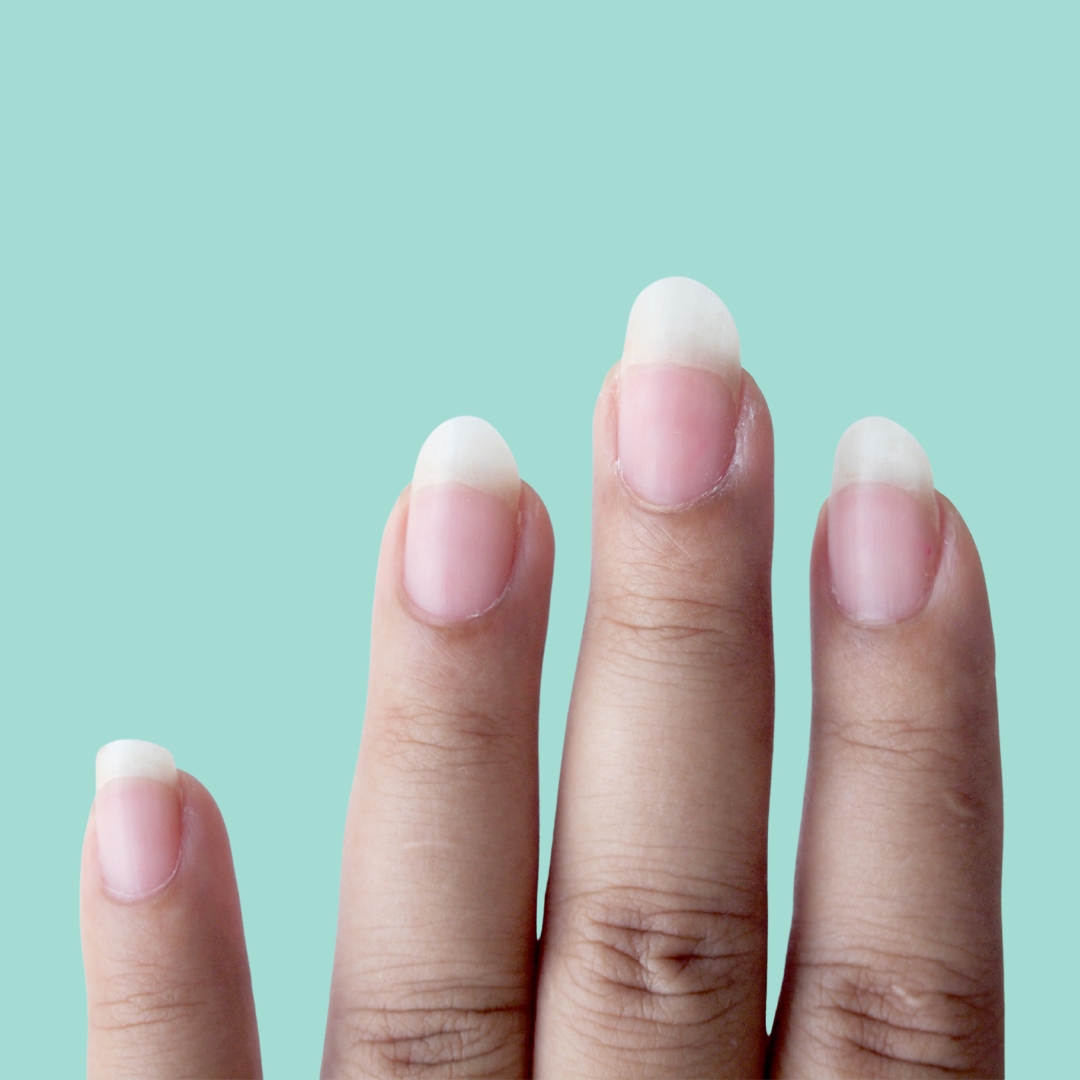Ever wondered why we have fingernails and toenails? They're not just there for nail art or giving you something to bite when you're stressed. Nope, there's a whole lot more to these little guys than meets the eye. Fingernails and toenails play a crucial role in our daily lives, and today we're diving deep into their purpose, evolution, and why they matter so much. So buckle up, because we're about to get nerdy!
Let’s be real, nails are kinda fascinating when you think about it. They grow, they break, and they require regular maintenance. But have you ever stopped to think why evolution decided to give us these hard little plates on our fingers and toes? It’s not just for aesthetics, my friend. There’s some serious science behind why we have fingernails and toenails, and it’s time we gave them the credit they deserve.
Now, before we dive into the nitty-gritty details, let’s set the stage. Nails are not just random appendages that appeared out of nowhere. They’ve been around for millions of years, evolving alongside us humans. And while they might seem like a minor detail in the grand scheme of things, they actually serve some pretty important functions. So, let’s get to it, shall we?
Read also:Jessy Schram Rising Star In The Entertainment World
What Are Fingernails and Toenails Made Of?
First things first, let’s talk about what fingernails and toenails are actually made of. If you thought they were just random bits of skin, think again. Nails are primarily composed of a protein called keratin, which is also found in hair and the outer layer of your skin. This tough, fibrous protein gives nails their strength and durability.
Keratin is produced by specialized cells called keratinocytes, which are located in the nail bed beneath your nails. These cells continuously divide and push older cells outward, which is why your nails grow over time. It’s a pretty cool process when you think about it—your body is constantly renewing itself, even in the tiniest of ways.
The Role of Keratin in Nail Health
Keratin isn’t just about making nails hard—it also plays a crucial role in maintaining their health. A diet rich in proteins and nutrients like biotin can help strengthen your nails and prevent them from becoming brittle. On the flip side, a lack of proper nutrition can lead to weak, cracking nails. So, if you’re noticing your nails aren’t as strong as they used to be, it might be time to reassess your diet.
Fun fact: Keratin isn’t just for humans! Animals like horses, cows, and even birds have keratin in their hooves, beaks, and feathers. It’s a versatile protein that’s been around for millions of years, proving just how important it is for survival.
Why Do We Have Fingernails?
Fingernails serve a variety of purposes that go beyond just looking pretty. For starters, they protect the sensitive tips of our fingers from injury. Without nails, our fingertips would be much more vulnerable to damage, which could affect our ability to perform fine motor skills like typing, writing, or even picking up small objects.
But that’s not all. Fingernails also enhance our sense of touch. The nail bed, which is the area beneath the nail, is packed with nerve endings that help us detect texture and pressure. This heightened sensitivity allows us to perform tasks that require precision, like threading a needle or playing a musical instrument.
Read also:Exploring Walmart Catskill A Journey Through Deals Discounts And Community Impact
Evolutionary Advantages of Fingernails
From an evolutionary standpoint, fingernails provided early humans with several advantages. They allowed us to manipulate objects more effectively, which was crucial for survival. Whether it was crafting tools, gathering food, or building shelter, strong fingernails gave us the edge we needed to thrive in a harsh environment.
Additionally, fingernails served as a protective barrier against infection. By covering the sensitive tips of our fingers, they reduced the risk of injury and infection, which could have been life-threatening in prehistoric times.
Why Do We Have Toenails?
Now let’s talk about toenails. While they might not get as much attention as their finger counterparts, toenails are just as important. For one, they protect the sensitive tips of our toes from injury. This is especially important when walking barefoot or navigating rough terrain.
Toenails also play a role in maintaining balance and stability. By providing a firm foundation for our toes, they help us stay upright and avoid falls. Think about it—without toenails, our toes would be much more vulnerable to injury, which could affect our ability to walk or run.
The Evolution of Toenails
Like fingernails, toenails have been around for millions of years. Early humans likely had much thicker, claw-like toenails that helped them grip the ground and climb trees. Over time, as humans evolved to walk upright, toenails became smaller and flatter, reflecting our changing lifestyle and environment.
Interestingly, some animals still retain claw-like toenails, such as cats and dogs. These claws serve a variety of purposes, from climbing to hunting. While humans no longer need claws for survival, our toenails still serve as a reminder of our evolutionary past.
How Do Fingernails and Toenails Grow?
Now that we know what fingernails and toenails are made of and why we have them, let’s talk about how they grow. As we mentioned earlier, nails grow from a specialized area called the nail matrix, which is located beneath the base of the nail. This matrix is constantly producing new cells, which push older cells outward, causing the nail to grow.
The average fingernail grows about 3 millimeters per month, while toenails grow much slower, at a rate of about 1 millimeter per month. This difference in growth rate is due to the fact that fingernails are more exposed to blood flow and nutrients, which promote faster growth.
Factors That Affect Nail Growth
Several factors can affect how fast your nails grow, including age, diet, and overall health. For example, younger people tend to have faster-growing nails than older individuals. Similarly, a diet rich in vitamins and minerals can promote healthy nail growth, while deficiencies can slow it down.
Fun fact: Nails grow faster in the summer than in the winter. This is thought to be due to increased blood flow and exposure to sunlight during warmer months. So, if you’re looking for an excuse to soak up some rays, consider it a science-backed reason!
Common Nail Problems and How to Prevent Them
While fingernails and toenails are incredibly useful, they’re not immune to problems. Issues like nail fungus, brittleness, and ingrown nails can cause discomfort and affect the appearance of your nails. But don’t worry—there are steps you can take to prevent these problems and keep your nails healthy.
Here are a few tips to keep your nails in tip-top shape:
- Keep your nails clean and dry to prevent infection.
- Moisturize your nails and cuticles regularly to prevent cracking.
- Avoid biting your nails or using them as tools.
- Eat a balanced diet rich in vitamins and minerals.
- Trim your nails regularly to prevent ingrown nails.
Treating Nail Fungus
Nail fungus is a common issue that affects millions of people worldwide. It’s caused by a type of fungus called dermatophytes, which thrive in warm, moist environments. Symptoms include thickened, discolored nails that may become brittle or crumbly over time.
Treatment options for nail fungus include topical creams, oral medications, and laser therapy. However, prevention is always the best approach. To reduce your risk of developing nail fungus, avoid walking barefoot in public areas like locker rooms or swimming pools, and keep your nails clean and dry.
The Science Behind Nail Color and Texture
Have you ever noticed how your nails can change color or texture depending on your health? It’s not just your imagination—nails can actually provide valuable insights into your overall well-being. For example, pale nails may indicate anemia, while yellow nails could be a sign of a fungal infection.
Similarly, ridges or grooves in your nails can indicate underlying health issues, such as psoriasis or eczema. If you notice any unusual changes in your nails, it’s important to consult a healthcare professional to rule out any serious conditions.
Nail Health and Overall Wellness
Healthy nails are a reflection of a healthy body. By taking care of your nails, you’re also supporting your overall health and well-being. This includes eating a balanced diet, staying hydrated, and avoiding harmful habits like smoking or excessive alcohol consumption.
Fun fact: Nails can even reveal clues about your personality. According to some studies, people with long, polished nails tend to be more detail-oriented, while those with short, practical nails may be more action-oriented. While this isn’t a hard-and-fast rule, it’s an interesting observation nonetheless!
Why Do Fingernails and Toenails Matter?
At the end of the day, fingernails and toenails matter because they play a vital role in our daily lives. From protecting our fingertips and toes to enhancing our sense of touch, they’re more than just cosmetic features. They’re a testament to millions of years of evolution, and they deserve our respect and care.
So, the next time you’re trimming your nails or admiring a fresh manicure, take a moment to appreciate just how amazing these little appendages really are. They might not be the most glamorous part of your body, but they’re certainly one of the most important.
Final Thoughts
In conclusion, fingernails and toenails are far more than just decorative accessories. They serve a variety of important functions that contribute to our overall health and well-being. By understanding their purpose and taking steps to care for them, we can ensure they continue to serve us well for years to come.
So, what are you waiting for? Grab a nail file, some moisturizer, and get to work. Your nails will thank you—and so will your body!
Call to Action
Now it’s your turn! Do you have any tips for keeping your nails healthy and strong? Or maybe you’ve had an experience with nail fungus or another nail-related issue. Share your thoughts in the comments below, and don’t forget to share this article with your friends and family. Knowledge is power, and the more we know about our nails, the better we can take care of them!

